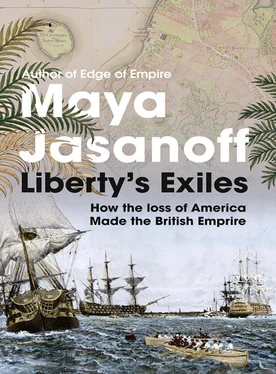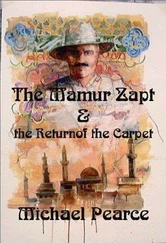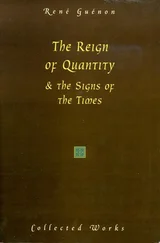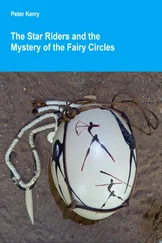A range of reasons, ideological and otherwise, led all the people in these pages to the same defining choice: to leave revolutionary America. 20This book sets out to explore what happened to them next. Of the sixty thousand loyalists who fled, about eight thousand whites and five thousand free blacks traveled to Britain, often to find themselves strangers in a strange land. The majority of refugees headed straight for Britain’s other colonies, taking up incentives of free land, provisions, and supplies. More than half relocated to the northern British provinces of Nova Scotia, New Brunswick, and Quebec, helping to transform regions once heavily French to the English-dominated Canada of today. * A further six thousand or so migrants, especially from the American south, traveled to Jamaica and the Bahamas—carrying the vast majority of the fifteen thousand exported slaves with them. Some ranged still farther afield. The East India Company army would soon be sprinkled with American-born officers, including two sons of the notorious turncoat Benedict Arnold. An unlucky few ended up among the first convicts sent to Botany Bay, in Australia. And in perhaps the most surprising migration, nearly twelve hundred black loyalists moved to Africa, under the sponsorship of British abolitionists, to found the utopian settlement of Freetown, in Sierra Leone. In short, loyalists landed in every corner of the British Empire. Within a decade of the peace, the map of the loyalist diaspora looked much like the map of the empire as a whole.
A handful of studies have looked at specific figures and sites within this migration. But the loyalists’ worldwide dispersal has never been completely reconstructed. 21A key reason for this lies in the fact that history is so often framed within national boundaries. In the United States, the history of the American Revolution was written by the victors, who were chiefly interested in exploring the revolution’s many innovations and achievements. Loyalist refugees simply fell outside the bounds of American national narratives. They received scant attention from British historians in turn, as embarrassing reminders of defeat—especially given the great triumphs in the Seven Years’ War and the Revolutionary-Napoleonic wars that Britons could focus on instead. Loyalists loom largest, instead, in Canadian history, where they were hailed by some nineteenth-century conservatives as the “founding fathers” of a proudly imperial Anglo-Canadian tradition, and honored as “United Empire Loyalists,” a title conferred by the imperial government on refugees and their descendants. But such treatments reaffirmed the “tory” stereotype and may well have contributed to later scholarly neglect.
There is also a practical reason that nobody has written this global history before. In the 1840s, Lorenzo Sabine, the first American historian who delved into this subject, lamented that “Men who . . . separate themselves from their homes . . . who become outlaws, wanderers, and exiles,—such men leave few memorials behind them. Their papers are scattered and lost, and their very names pass from recollection.” 22In fact, it is remarkable how much does survive: personal letters, diaries, memoirs, petitions, muster rolls, diplomatic dispatches, legislative proceedings. The challenge is putting it all together. Fortunately for twenty-first-century scholars (privileged with funding and access), technology has made it possible to pursue international histories in new ways. One can search library catalogues and databases around the world at the touch of a button, and read digitized rare books and documents on a laptop in one’s living room. One can also travel with increasing ease, to piece together paper trails scattered across continents, and to see what remains of the refugees’ worlds: the houses loyalists built on out-islands of the Bahamas, the precipitous slopes they cultivated above Freetown, or their gravestones, weathered in the Canadian maritime wind.
To look at the American Revolution and the British Empire from these vantage points is to see the international consequences of the revolution in a completely new way. The worldwide resonance of the American Revolution has traditionally been understood in connection with the “spirit of 1776” that inspired other peoples, notably the French, to assert their own rights to equality and liberty. 23Tracing loyalist journeys reveals a different stamp of the revolution on the world: not on burgeoning republics, but on the enduring British Empire. Loyalist refugees personally conveyed American things and ideas into the empire. The fortunate brought treasured material objects: a finely wrought sugar box, a recipe book, or, more weightily, the printing press used by one Charleston family to produce the first newspapers in St. Augustine and the Bahamas. 24But they carried cultural and political influences too—not least the racial attitudes that accompanied the loyalists’ mass transport of slaves. One transformative export was the Baptist faith taken by black loyalist preachers from a single congregation in the Carolina backcountry, who went on to establish the first Baptist churches in Nova Scotia and New Brunswick, Jamaica, and Sierra Leone. In the most striking “American” transmission of all, loyalist refugees brought with them a discourse of grievance against imperial authority. In British North America, the Bahamas, and Sierra Leone, loyalist refugees beset hapless British governors with demands for political representation that sounded uncannily like those of their patriot peers. “Loyalist” these days often connotes a die-hard supporter of a cause, but American loyalists were certainly not unblinking followers of British rule.
Considering these kinds of revolutionary legacies brings into focus a remarkable period of transition for the British Empire, and helps make sense of a seeming paradox. The American Revolution marked the empire’s single greatest defeat until the era of World War II. Yet in the space of a mere ten years, it bounced back to an astonishing extent. Building on earlier precedents, British power regrouped, expanded, and reshaped itself across the world—in Ireland and India, Canada and the Caribbean, Africa and Australia. 25All told, the 1780s stand out as the most eventful single decade in British imperial history up to the 1940s. What was more, the events of these years cemented an enduring framework for the principles and practice of British rule. This “spirit of 1783,” so to speak, animated the British Empire well into the twentieth century—and provided a model of liberal constitutional empire that stood out as a vital alternative to the democratic republics taking shape in the United States, France, and Latin America.
What did this postwar restructuring involve, and what role did refugee loyalists play in the process? The “spirit of 1783” had three major elements. 26First and most visibly, the British Empire significantly expanded around the world—and loyalists were both agents and advocates of imperial growth. Historians used to portray the American Revolution as a dividing line between a “first” British Empire, largely commercial, colonial, and Atlantic, and a “second” empire centered in Asia and involving direct rule over millions of manifestly foreign subjects. But loyalist refugees bridged the two. As pioneer settlers in British North America, the Bahamas, and Sierra Leone, they demonstrated the continued vitality of the Atlantic empire alongside what has been described as the empire’s “swing to the east.” They also promoted ambitious expansionist projects elsewhere in the world, championing schemes to extend British sovereignty into Spanish America, or around the western borders of the United States. Far-fetched though some of these ideas can seem in retrospect, they hardly seemed so at a time when the future shape of the United States was very unclear, and Britain (among other European empires) was successfully establishing footholds in some of the most remote quarters of the globe. The first serious proposal to colonize Australia was put forward by none other than an American loyalist. 27
Читать дальше











